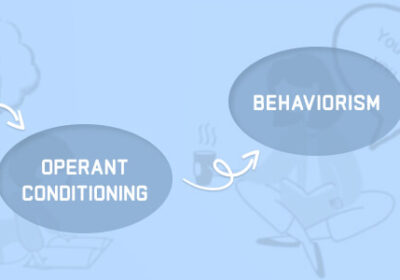Diversity In Hiring: Strategies To Build A More Inclusive Talent Pool
Every business owner or manager would agree that there is nothing better for a business than a diverse employee base. You would not even have to look at the statistics to intuitively know that diversity hiring strategies contribute to the overall performance of the company.
It makes sense that having multiple backgrounds and perspectives in a team contributes to the freshest and most diverse ideas to solve issues and drive innovation.
This is the main reason why companies globally are more focused on having a diverse workforce.
But recruiting them is not as easy as you think. Diversities hiring strategies are way more complicated than they are in the texts. It is important that companies come up with inclusive recruitment strategies to ensure every single individual gets an equal opportunity to thrive.
In this article, we shall discuss all the techniques and strategies that organizations can use to promote diversity in their workforce.
What Do You Mean By Diversity Recruiting?

Diversity in the workplace is the concept that your team needs to reflect the general structure of the society around you. The employee base needs to have an array of people coming from different backgrounds and experiences.
This includes diversity regarding experience, gender, race, socio-economic levels, sexual orientation, religion, and so on.
Factors To Rethink In Screening Candidates

When it comes to hiring a diverse workforce, starting at the very base of it is very important. Recruitment has different levels, too. Each level should cater to maintaining the same balance of diversity without fail.
So, if you think that your diversity hiring strategies are bringing in some good candidates but you are struggling to screen them, here are some of the tactics that you can put to good use.
Use Blind Resumes
This is one of the most popular screening techniques that recruiters usually use to eliminate any bias from screening candidates. In this process, recruiters “blackout” every single piece of personal information from resumes. Information such as name, date of birth, schools, and so on promotes some degree of biased evaluation of the candidate.
Use Blind Interviews
Blind interviews are just identical to blind resumes. Only in this case do the recruiters apply this technique to the early conversations with candidates.
This may be done by sending textual questions to the candidates through an email or a recruitment platform of the recruiter’s choice. The candidate would then answer all of those questions and prove their personal information while remaining completely anonymous.
Here, the motive is to remain absolutely free of bias when it comes to who you choose to interview further.
Use AI To Review Resumes
One way to ensure zero bias in the screening process is to use AI-based platforms to review the resumes of candidates. This will give you a shortlist that is absolutely impartial and free from any type of bias.
Think About The Factors You Are Screening For
An important part of diversity recruiting is to forever question which traits you value the most in your candidates, why you do so, and if that is based on your own bias.
Take some time looking at how you text and screen candidates and check if you have been steering the results towards some specific groups of people. If yes, it might be time to change your texting methods.
Techniques To Increase Diversity In Shortlisting And Hiring

Once you are done with the screening process, it is time for you to shift to the shortlisting and hiring process. Even in this process, it is important to maintain diversity to get the best of the employees in your workforce.
Automate The Shortlisting Using ATS
ATS is one of the best ways to impartially carve down the list to the candidates with high potential. You can also use screening tools that come with ATS to look for candidates with maximum potential and the best resume of skills.
This technique will allow you to completely eliminate any personal opinion about certain candidates from the equation and concentrate only on the information that is relevant to the job description. Shortlisting candidates depending on specific requirements will help move towards an increase in diversity.
If you already had a diverse talent pool, then shortlisting a diverse variety of candidates would not be that big of an issue.
Seeding Talent Pipelines With Diverse Candidates
There has been hardcore proof that diverse candidates get far fewer opportunities to be chosen when they are the only ones from a single demographic. To fight against this decision bias, you may use a diverse recruitment strategy known as “the two-in-the-pool effect.”
The principle here is to have many people within the same demographic. This increases the possibility that one of them will definitely be hired. Hence, you can be sure to hire the best candidates without referring to their backgrounds.
Why Are Diversity Hiring Strategies Important?

Diversity in hiring strategies means better access to a more robust pool of talent, a better understanding of the needs and wants of your customers, and an increase in profit.
Multiple aspects of a company improve through diversity – interviewing applicants, designing prototypes, or running social media campaigns.
Here are some of the more prominent benefits that a diversity hiring strategy can bring to you:
Access To More Talent
When you do not just stick within a line, you can just explore all your options when it comes to recruiting candidates for your organization. When you are being diverse with your recruiting strategies, you can hire the best ones from every demographic and background.
Better Understanding Of The Customers And Their Needs
Promoting diversity in the workplace leads to a better customer base. Customers look for companies that understand their pain points and fulfill all their needs. With this kind of understanding, the company designs and markets products and services that are more innovative, inclusive, and tailored to a more diverse customer base.
Increased Profit
Diversity is usually brought up in relation to doing what is right for the employees and the company culture. However, it is not just for the sake of company culture; companies are likely to make way more profit when they have a diverse employee force working for them.
Better Creativity, Productivity, And Innovation
An organization that nurtures diversity brings in a multitude of perspectives and ideas that ignite creativity and innovation.
While brainstorming, a diverse group of individuals may get to highlight insights and nuances that might not have been noticed by any one individual.
Boosted Employee Engagement
Employees who feel more appreciated and welcomed at work have the tendency to work harder. Also, it has been noted that employees tend to engage more in a diverse working environment.
Lower Turnover Rate
When people do not feel appreciated in the company they work for, they find better jobs somewhere else. But, when it comes to diverse workplaces, employees prefer staying in their position even more.
Improved Company Culture
When organizations include more people from different backgrounds, it contributes to improving the company culture to a great extent.
Positive Brand Reputation
Recruiting a diverse workforce improves the overall reputation of the brand. By accepting diversity, a company demonstrates its commitment to equality, inclusivity, and social responsibility.
Conclusion
Diversity hiring strategies are one of the best ways for companies to acquire talent. A diverse workforce is the secret to those areas of success that a homogeneous workforce can never unlock.
With a diverse workforce, not only can you create a positive brand image but also increase your profit by a visible margin.



